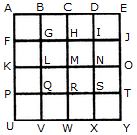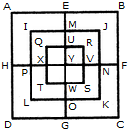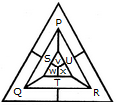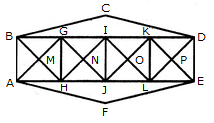Non Verbal Reasoning :: Analytical Reasoning
-
What is the minimum number of colours required to fill the spaces in the given diagram without any two adjacent spaces having the same colour?

-
Count the number of triangles and squares in the given figure.

-
Count the number of triangles and squares in the given figure.

-
What is the minimum number of different colours required to paint he given figure such that no two adjacent regions have the same colour?
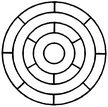
-
Count the number of triangles and squares in the given figure.

-
In the adjoining figure, if the centres of all the circles are joined by horizontal and vertical lines, then find the number of squares that can be formed.




 Whatsapp
Whatsapp
 Facebook
Facebook


